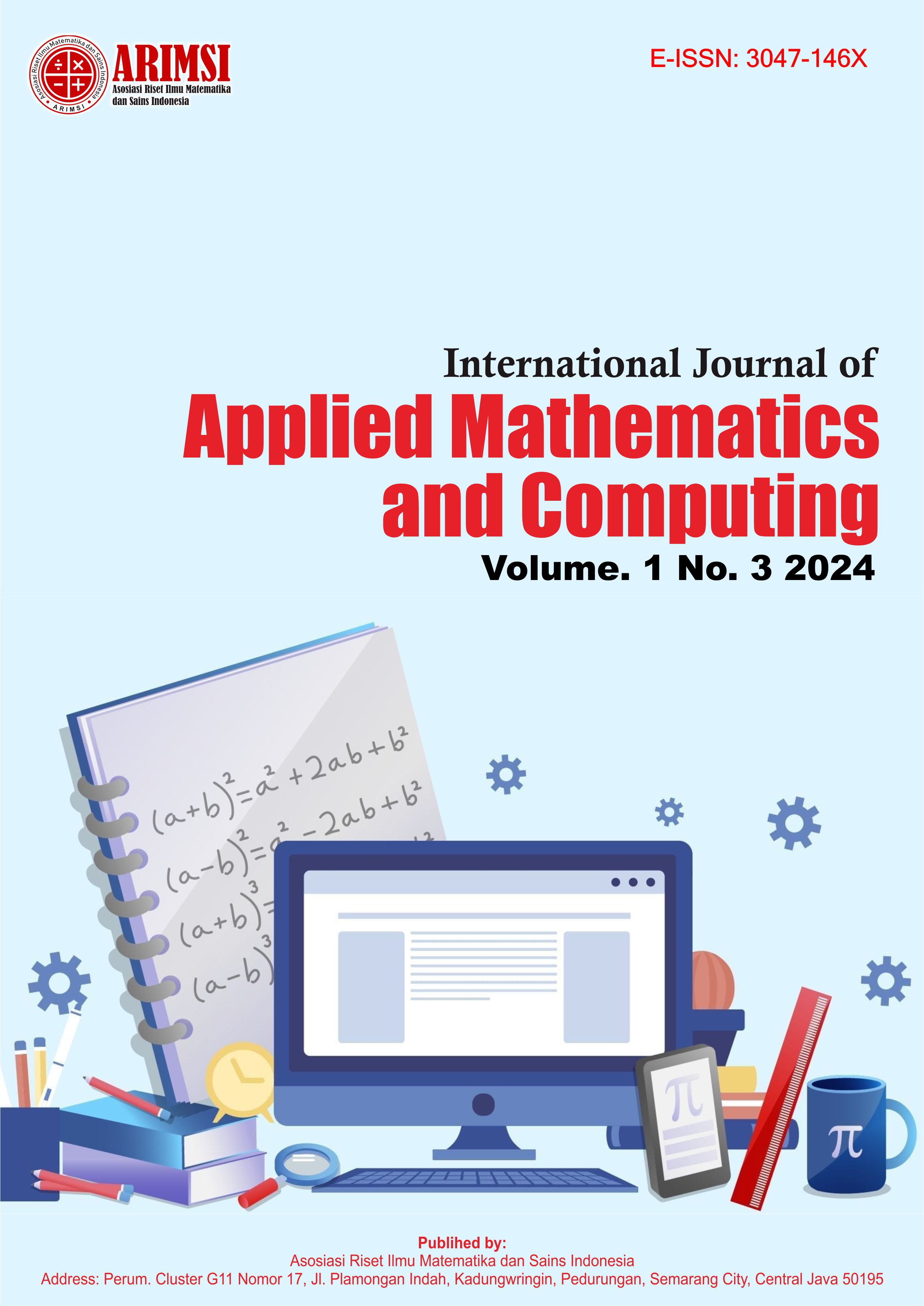Analyze The Effectiveness Of Dynamic Programming In Improving Robust Queue Management Strategies
DOI:
https://doi.org/10.62951/ijamc.v1i3.22Keywords:
Dynamic programming, Strong queue management, Performance optimization, Resource allocation, Mathematical modelingAbstract
This Article Review for aims to analyze the effectiveness of dynamic programming as a tool to improve robust queue management strategies in service systems. Dynamic programming is an optimization technique used to determine the optimal solution to problems that can be broken down into smaller problems. Explore how dynamic programming can be used to improve queue management strategies, including reducing wait times, improving resource allocation, and increasing system efficiency. The research is based on an analytical model that combines dynamic programming with row theory Immune-waiting, includes mathematical and experimental analysis to evaluate the effectiveness of these strategies in different applied contexts. The research aims to provide practical insights on how dynamic programming can be used to improve the performance of SOA systems and to provide recommendations for improving management strategies.
References
Ahmed, F. G. (1999). Introduction to operations research and administrative sciences. Dar Al-Fikr Al-Arabi.
Ahmed, S. M. (1999). Production and operations management in industry and services (4th ed.). University House.
Ali, G. A. (2007). Definition of polarization parameters for cathode protection using neural network (Master's thesis). Department of Metallurgical Engineering, University of Technology.
Al-Madi, M. T. (1999). Quantitative methods in the field of management. University House.
Al-Musawi, A. R. (2001). Introduction to operations research (1st ed.). Dar Wael.
Al-Nasih, M. S. (1992). Daily operation of the reservoir of Bkhma (Master's thesis). College of Engineering, University of Baghdad.
Al-Nuaimi, M. A. A., et al. (1999). Operations research. Wael Publishing House.
Al-Saadi, D. A. (1999). The use of dynamic programming in the analysis of storage models (Master's thesis). College of Administration and Economics, University of Baghdad.
Anaam, B., & Naweb, I. (1999). Operations research, algorithms and computer programs (1st ed.). Dar Wael.
Bansal, K., Vadhavkar, S., & Gupta, A. (1997). Neural network-based data mining applications for medical inventory problems. International Journal in Agile Manufacturing (forthcoming).
Brown, J. R. (1994). Bounded knapsack sharing. Mathematical Programming, 67.
Carton, D. (1975). Processus aléatoires utilisées en recherche opérationnelle. Masson.
Chu, P., & Beasley, J. (1998). A genetic algorithm for the multidimensional knapsack problem. Journal of Heuristics, 4.
Dantzig, G. B. (1957). Discrete variable extremum problems. Operations Research, 5.
Doubosson, M., & Rousseau, M. (1997). Le service global international: Stratégie international de développement dans les services. Maxime.
Dranoff, J. S., Milten, L. G., Stevens, W. F., & Wanniger, L. A. (n.d.). Application of dynamic programming to countercurrent flow processes. Journal of Operations Research Society, 9, 401.
Egbelu, P. J., & Lehtihet, A. (1990). Operation routing with lot sizing consideration in a manufacturing system. International Journal of Production Research, 28(3).
El-Bakry, S. M. (1997). The use of quantitative methods in management. University House.
Faure, R., et al. (2000). Précis de recherche opérationnelle (5th ed.). Dunod.
Galal, I. E.-A. (2004). The use of quantitative methods in making administrative decisions. Alexandria University House.
Pfaffenberger, R., & Patterson, J. (1977). Statistical methods for business and economics.
Sheathe, D., & Hristakeva, M. (2005). Different approaches to solve 0/1 knapsack problem. Computer Science Department, Simpson College, Indianola, A 50125.
Zolinger, M., & Lamarque, E. (2004). Marketing et stratégie de la banque. Dunod.
Downloads
Published
Issue
Section
License
Copyright (c) 2024 International Journal of Applied Mathematics and Computing

This work is licensed under a Creative Commons Attribution-ShareAlike 4.0 International License.





